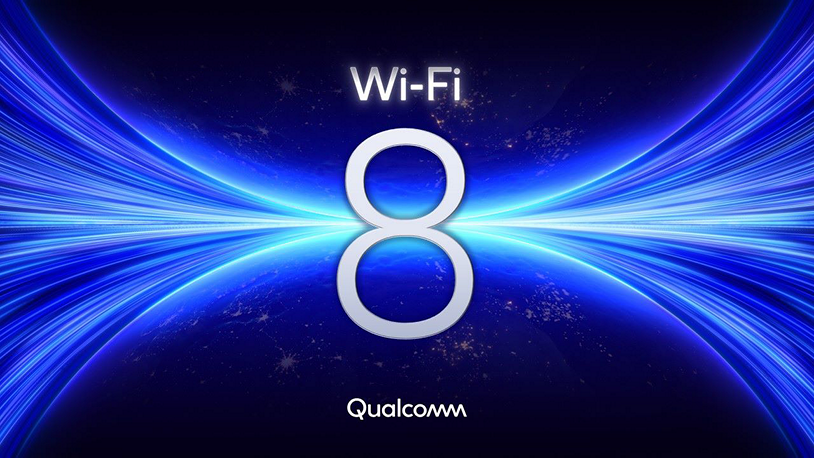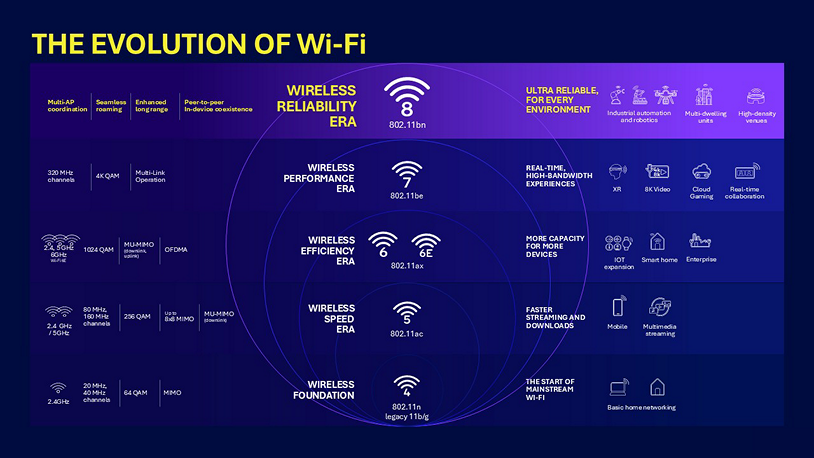
We already know that the next-generation Wi-Fi 8 (IEEE 802.11bn) specification is not meant to improve performance, but rather to boost reliability of wireless connections as they become even more ubiquitous. Since improving reliability is a pretty vague description, the IEEE has issued a scope document that quantitatively defines these enhancements. According to a new post by Qualcomm (which is a contributor to the standard), the IEEE wants Wi-Fi 8 devices to offer a 25% improvement across a number of metrics, under the umbrella of Ultra High Reliability, or UHR.
Just like Wi-Fi 7, Wi-Fi 8 is set to offer a peak physical layer (PHY) rate of up to 23 GT/s, though it remains to be seen whether such rate will be achievable in real-world conditions. The UHR goals in Wi-Fi 8 aim to deliver a 25% increase in real-world data throughput specifically under challenging signal conditions.
UHR means devices operating at the edge of network coverage, or in areas with interference or weak signals, can still achieve significantly better performance compared to Wi-Fi 7 (i.e., move data fast even when signal quality is not ideal).

The standard also targets a 25% reduction in latency at the 95th percentile — not just average latency — to improve worst-case responsiveness, which is critical for time-sensitive applications like augmented reality, industrial automation, and AI-based systems that depend on fast and predictable communication.
Finally, Wi-Fi 8 is designed to achieve 25% fewer dropped packets, especially when users or devices move between access points. As part of the overall Wi-Fi 8 standard, this goal is meant to support seamless roaming and uninterrupted connectivity, which promises to make it far more suitable for environments where mobility is common, such as enterprise campuses, public venues, and production environments, such as plants.
At a broad technical level, Wi-Fi 8 (802.11bn) shares much of the same foundation as Wi-Fi 7 (802.11be): it operates across the 2, 4, 5, and 6 GHz frequency bands, employs 4096-QAM modulation, supports up to eight spatial streams, utilizes MU-MIMO and multi-user OFDMA, and maintains a maximum channel width of 320 MHz.
To achieve its goals, the Wi-Fi 8 specification is set to support a number of key new features, including Coordinated Spatial Reuse (Co-SR), Coordinated Beamforming (Co-BF), Dynamic Sub-Channel Operation (DSO), and enhanced Modulation Coding Scheme (MCS).
If the IEEE's guidance bears out, Wi-Fi 8 could significantly benefit applications that require reliable, low-latency connectivity, particularly in environments with congestion, interference, or mobility. In enterprise and industrial settings, it could support mission-critical systems like autonomous guided vehicles, collaborative robots, and factory automation to ensure seamless operation even during transitions between access points.
In public venues such as airports, malls, or stadiums, Wi-Fi 8 could improve workloads like AR navigation, live video sharing, real-time translation, and critical systems like surveillance and emergency communication. As for the home, users might experience higher performance and more reliable connections in dense residential buildings.

Wi-Fi 8 (IEEE 802.11bn) is expected to reach draft 1.0 status any day now, which will define its core features and enable makers of equipment to implement them. Actual Wi-Fi Alliance certification is planned for January 2028, enabling product interoperability testing and development. Final approval by the IEEE 802.11 Working Group is scheduled for March 2028, which is when the standard will be completed.
Follow Tom's Hardware on Google News to get our up-to-date news, analysis, and reviews in your feeds. Make sure to click the Follow button.







